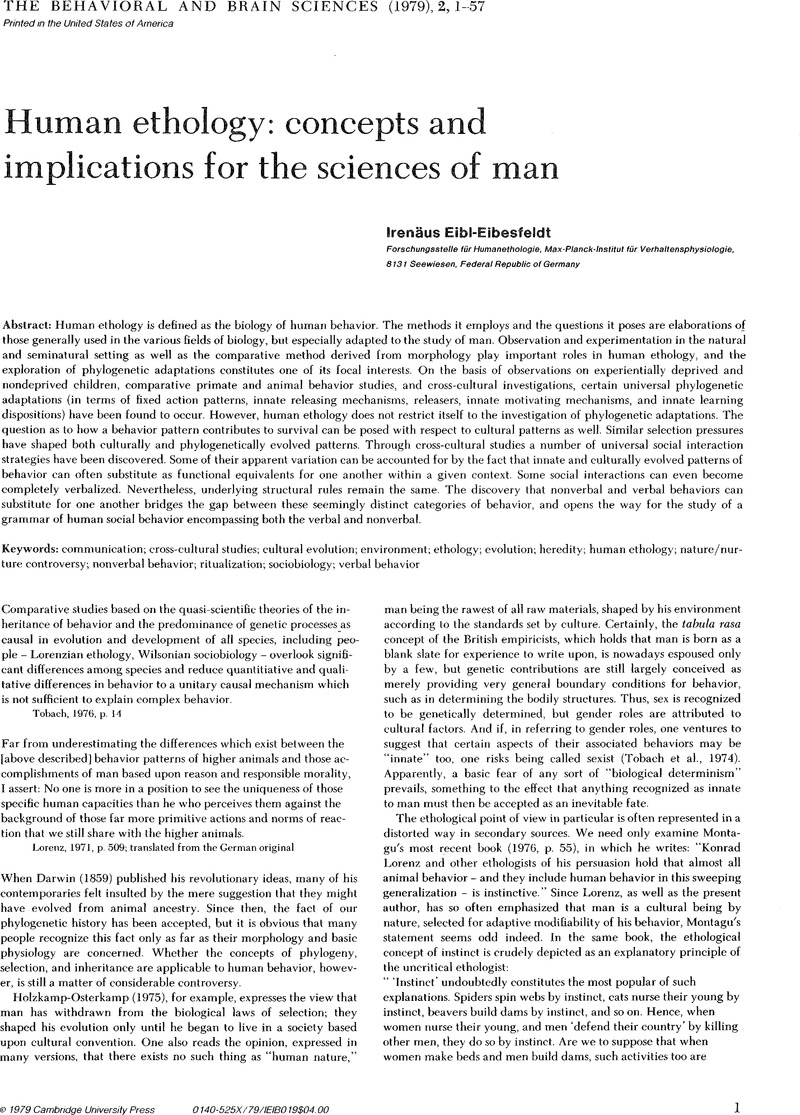Crossref Citations
This article has been cited by the following publications. This list is generated based on data provided by Crossref.
Bekoff, Marc
1980.
Human ethology, biological determinism, directive genes, and trees.
Behavioral and Brain Sciences,
Vol. 3,
Issue. 4,
p.
623.
Sapolsky, Robert
and
Eichenbaum, Howard
1980.
Still-life photographs: The power of human ethology in the explanation of human behavior.
Behavioral and Brain Sciences,
Vol. 3,
Issue. 4,
p.
628.
Bubenik, A. B.
1980.
On demographic factors and neurohormonal substrates.
Behavioral and Brain Sciences,
Vol. 3,
Issue. 4,
p.
624.
Simons, Ronald C.
1980.
Eibl-Eibesfeldt's human ethology: The problem of evidence.
Behavioral and Brain Sciences,
Vol. 3,
Issue. 4,
p.
629.
Harrington, Gordon M.
1980.
Locus of causation: analysis of ethological similarities.
Behavioral and Brain Sciences,
Vol. 3,
Issue. 4,
p.
625.
Wassermann, Gerhard D.
1980.
A critique of some aspects of human ethology.
Behavioral and Brain Sciences,
Vol. 3,
Issue. 4,
p.
630.
Eibl-Eibesfeldt, I.
1980.
Jumping on the Sociobiology bandwagon.
Behavioral and Brain Sciences,
Vol. 3,
Issue. 4,
p.
631.
Markl, Hubert S.
1980.
How much can the ethological approach contribute to an understanding of human behavior?.
Behavioral and Brain Sciences,
Vol. 3,
Issue. 4,
p.
626.
1980.
Addendum.
Behavioral and Brain Sciences,
Vol. 3,
Issue. 4,
p.
634.
1980.
BBS Associateship.
Behavioral and Brain Sciences,
Vol. 3,
Issue. 4,
p.
637.
Pitman, Roger K.
1980.
Austro-German ethology and schizophrenia.
Behavioral and Brain Sciences,
Vol. 3,
Issue. 4,
p.
627.



